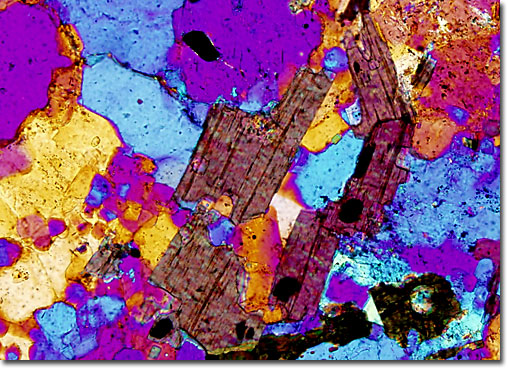|
The distinct banding that is apparent in gneisses is usually due to a segregation of light and dark colored minerals in the rock. The light bands within the rock primarily consist of quartz and feldspar, but the composition of the darker bands may differ significantly depending on the sample. A gneiss in which the dark green or black amphibole mineral hornblende is largely responsible for the dark coloration is typically referred to as a hornblende gneiss. In such cases, hornblende is not usually the only dark mineral present, though it generally accounts for at least 20 percent of the rock’s composition. Other accessory minerals, such as biotite and pyroxene, may occur in hornblende gneisses as well, but in smaller amounts.
|
